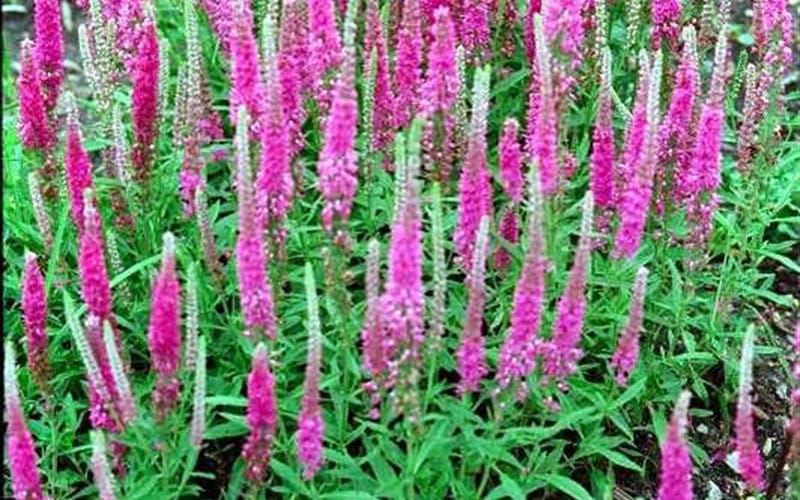
How to choose and grow the best perennials – part i
Discover tips for selecting, planting, and enjoying perennials that enhance your garden’s beauty and biodiversity all season long.
- Patricia Hanbidge, Horticulturist
May 25, 2025
key points from this story:
- Perennials require less work than annuals
- They enhance biodiversity in the garden
- Colour can last from April to October
- Long-blooming varieties are recommended
- Choose perennials that do not spread aggressively
- Veronica spicata cultivars are highlighted
As I am eagerly awaiting some new perennials for my garden, I thought that sharing why these plants are going to become part of my garden was a great idea for a series of articles. I am always encouraging gardeners to grow perennials as they require less overall work, enhance biodiversity and provide a unique blend of season-long interest. Perennials are a one-time investment which is always a benefit to my bank account. As long as you do a great job of the initial work amending your soil – that work is forever done if you also follow sustainable landscaping practices. As they are always present, they change your garden chores a bit but their roots are always in the ground so erosion is never a concern.
First and foremost, I thought it was important to ensure that throughout the entire growing season I would have colour in my garden. Having colour in the garden from April to October is not only beautiful but also helps some of our smaller critters the opportunity to thrive for as long as possible. I love to plant for the bees, the butterflies and the hummingbirds too and care enough to ensure they have a selection of food and pollen in the very early spring and as far into the fall as possible. Learning about what you grow, their season of bloom and all the other interesting cultural facts is exciting too!
One of the biggest challenges when growing perennials is to successfully have colour in your garden throughout the growing season. This is due to many perennials having a short season of bloom. Also, as we live with weather that is not always the same every year, this blooming time will change from year to year. Thus, a great solution to guarantee colour is to at least grow some perennials with a longer bloom time.
The other thing that I insist on with perennials is to only grow those that behave. Just because you grow perennials that give colour throughout the growing season does not mean that you need to be out in the garden day and night keeping it looking beautiful. Gardening with the philosophy of live and let live is possible but only if you have plants that respect this philosophy. I prefer not to be a slave to any living thing so the last thing that I want to add into my low-maintenance garden is a perennial that does not stay where it was planted. These perennials that spread everywhere are weeds and thus do not have a place in my garden.
A selection of Veronica spicata also known as Speedwell are some well-behaved and simply beautiful perennials that are well-behaved and give a long period of colour. They are very attractive to butterflies and bees. Please read on for particulars on each cultivar. Please note that all are upright, clump forming perennials with dense slender spikes of star-shaped flowers that are attractive to both butterflies and bees. The blooms open from the base upwards and do well in full sun to partial shade.
V. spicata ‘Red Fox’ has vibrant fuchsia-pink flowers from mid to late summer, is a bushy, upright and clump forming perennial which is 12 to 16 inches (30-40cm) tall and spreads 12 to 14 inches (30-35cm).
V. spicata ‘Royal Candles’ is a favourite Speedwell of many perennial gardeners. The slender spikes of star-shaped deep blue-purple flowers show from early to late summer. They are about the same height and spread as ‘Red Fox’ Speedwell.
V. spicata ‘Sunny Border Blue’ has a bushy clump of crinkled dark green leaves with spikes of deep violet-blue flowers for many weeks. It will reach a height of 12 to 18 inches (30-45cm) and spreads about the same as its height. It was the Perennial Plant of the Year in 1993.
Watch for the continuation of this series of articles devoted to the best perennials to include in your garden.
Last Mountain Times Newsletter
Join the newsletter to receive the latest updates in your inbox.



